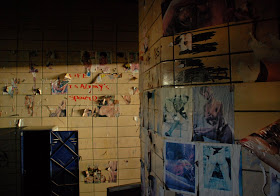 November 30th, 2009 -
November 30th, 2009 -Sunset Park is Brooklyn's last stronghold of waterfront industry. Stretched out along approximately 50 blocks, its industrial zone houses numerous small businesses and four major industrial complexes - Industry City, the Brooklyn Army Terminal, Bush Terminal and the South Brooklyn Marine Terminal. According to the Southwest Brooklyn Industrial Development Corp, "over 20,000 people are employed by Sunset Park's manufacturing and industrial sectors."
Today, the South Brooklyn Marine Terminal is being redeveloped by its operator, the New York City Economic Development Corporation (NYCEDC). This 88 acre industrial complex has been underutilized for several years, with empty warehouses, abandoned offices and rotting locker rooms. Some of these spaces are now being demolished as part of the NYCEDC's Sunset Park Vision Plan. This plan, which also encompasses the $36 million park at Bush Terminal, promises to "strengthen the area as a center for industrial growth" with $40 million earmarked for "creating rail infrastructure and a new public berth" and a "$48 million investment to rehabilitate docks" at the terminal. After these improvements are complete, the terminal will be home to the Axis Group - an "auto-processing company" and Sims Recycling - "a modern recycling center."
Hopefully the NYEDC Vision Plan will help retain Sunset Park's working waterfront for many decades to come.
---
For more photo essays from Brooklyn's Sunset Park please visit Bush Terminal (2007), the Brooklyn Army Terminal (2008), Empire Electric (2009), S & S Machinery (2010) and the 68th Police Precinct (2011).


























